Convert Text to Number in Excel to streamline your data processing and ensure that your calculations are accurate and meaningful. This essential feature corrects common data import issues and prepares your datasets for comprehensive analysis and reporting. By mastering this functionality, you can enhance the reliability of your Excel workbooks, making your data more actionable and your insights more precise. Embrace this tool to elevate your Excel skills, ensure data integrity, and make informed decisions based on accurate numerical information.
Values in Excel worksheets may appear to be numbered, but they do not add up, do not multiply, and cause formula problems. Numbers formatted as text are a common cause of this.
| TEXT | NUMERIC |
| By default, Text is left-aligned.
|
By default, numbers are right-aligned.
|
| When many cells are selected, the Status Bar just displays Count. | When many cells are selected, the Status Bar displays Average, Count, and SUM. |
| The Text format is displayed in the Number Format field (in many cases, but not always). | The Number Format box displays the General format. |
| A leading apostrophe may be observed in the formula bar but not always. | |
| Text is indicated by a green triangle in the upper-left corner of a cell. |
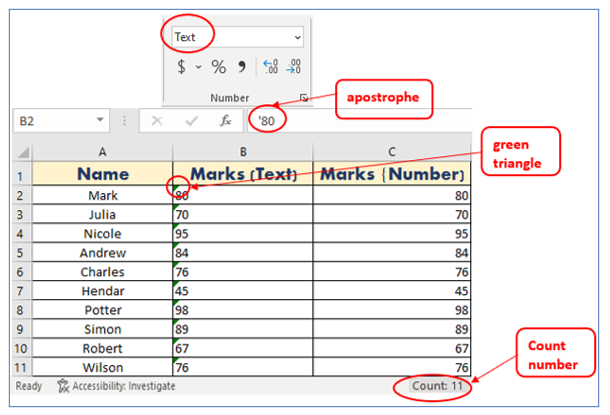
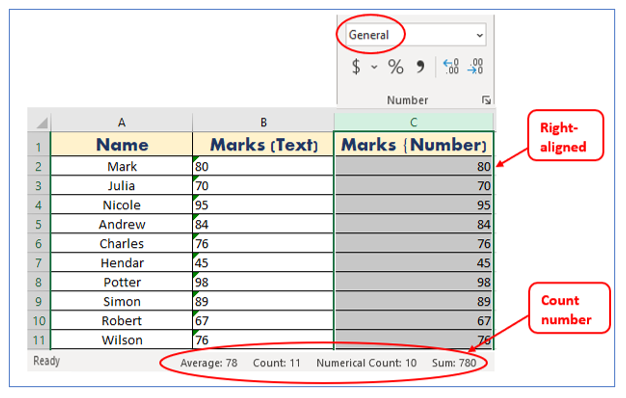
Function ISNUMBER to check if a value is numeric or text.
To determine whether a value is a number, use the ISNUMBER function. If it is a number, it returns TRUE; otherwise, it returns FALSE.
To calculate, follow below process:
Step-1: Prepare a data table with information outlined below:

Step-2: Set a formula in cell C-2, outlined below:
Formula:
=ISNUMBER(B2)
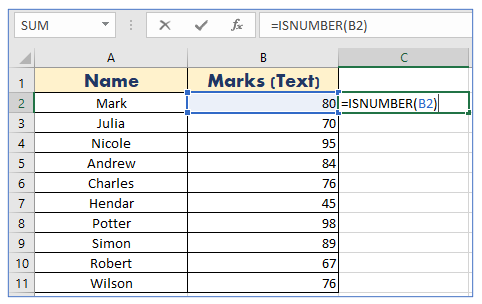
Step-3: Copy it to each of the other cells in the column. Result outlined below:
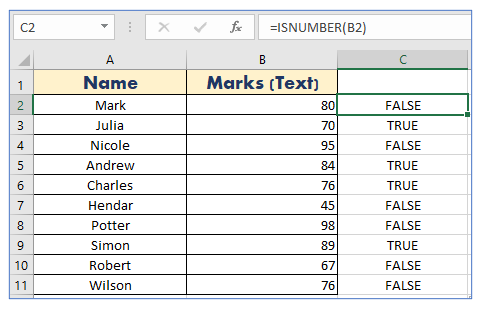
How to convert text to number in Excel?
Option 1:
Convert to number in Excel with error checking / Use the Warning Symbol
Step-1: First, choose the cells you want to convert back to number format.
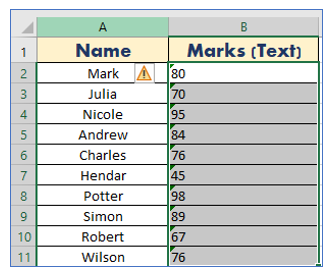
Step-2: Click the exclamation mark icon.
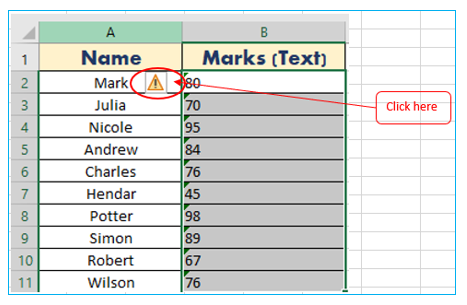
Step-3: From the dropdown, choose Convert to Number.
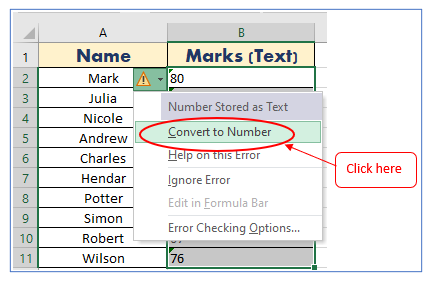
This will convert all text-based numbers you’ve selected to the General numeric data format. Result outlined below:
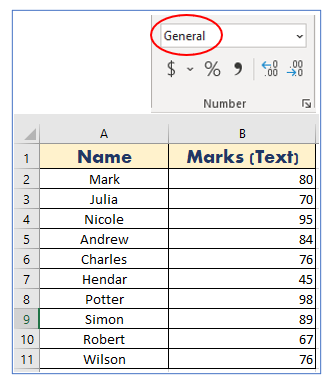
Option 2: Convert text into number by changing the cell format
Step-1: First, choose the cells you want to convert back to number format.
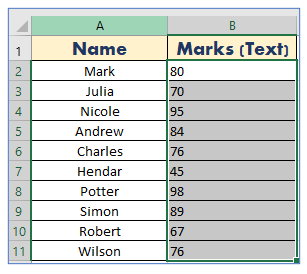
Step-2: Click the Home menu, and then, from the Number Format drop-down menu, select General or Number.
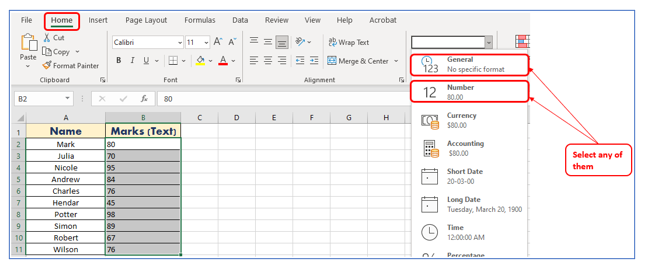
Alternatively,
Step-2: Right-click the cell(s) and select “Format Cells.”
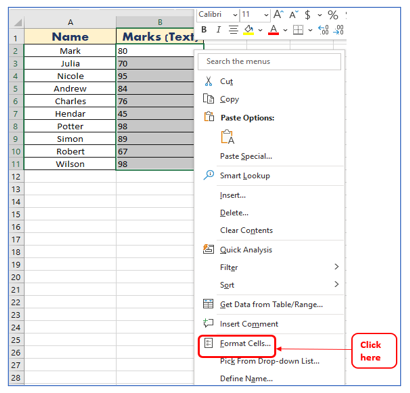
Step-3: Choose the Number tab, then “Number” on the left. Adjust the Decimal Places, if necessary, then click “OK.”
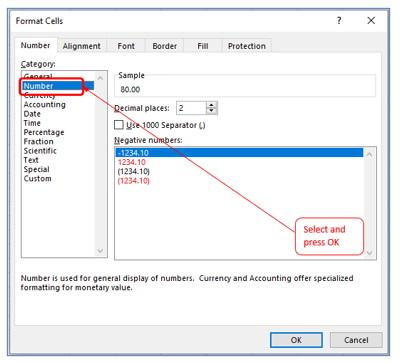
Result outlined in below:
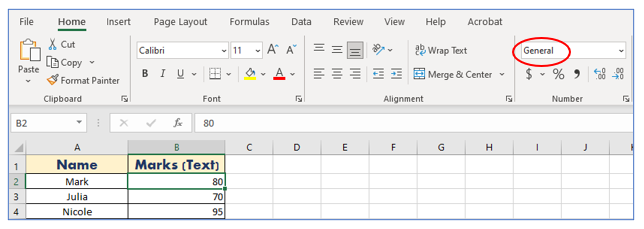
Option 3: Convert string to number with ‘Text to Columns’:
Step-1: First, choose the cells you want to convert back to number format.
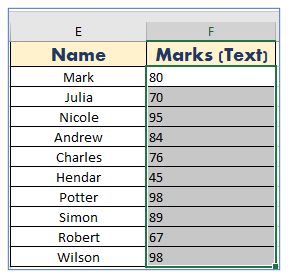
Step-2: From the Data menu, pick Text to Columns in the Data Tools section of the ribbon.
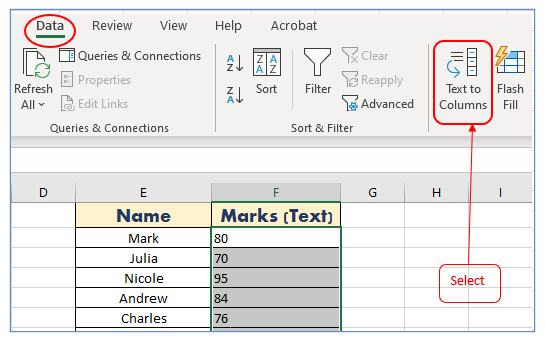
Step-3: Keep the default Delimited justification in the Wizard window and click Next.
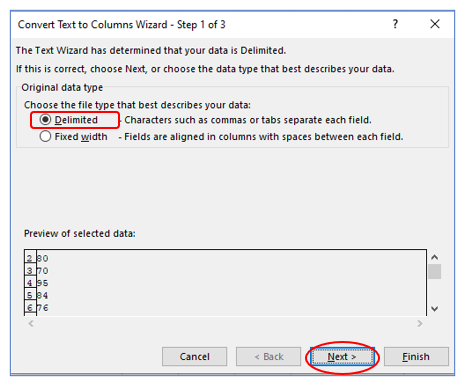
Step-4: Keep the default Tab selected on the following Wizard screen, and then click Next.
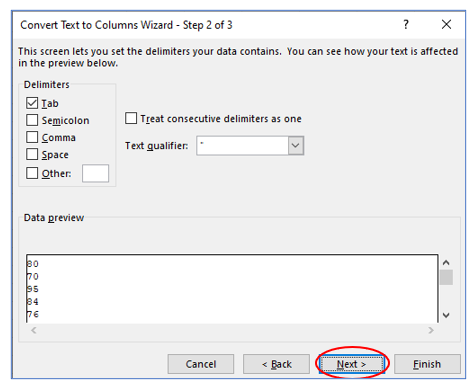
Step-5: Make sure General is selected under Column data format on the Wizard’s final page. For the Destination field, you may either choose a new column or leave the present column alone. Select Finish.
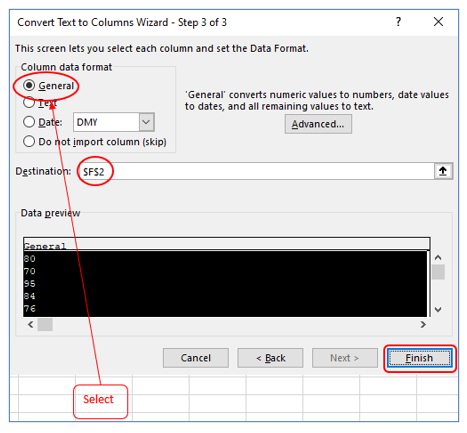
NOTE: Even if the values themselves can now be used as numbers, the actual cell formatting does not change from Text to General. However, if you change your output column to a new column, you will notice that the new column’s formatting is set to General.
Option 4: Convert Text to Number with Multiply by 1
Step-1: Select an adjunct cell and put the formula.
FORMULA:
=B2*1
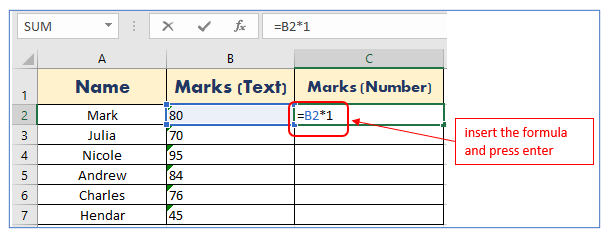
Step-2: Press enter and drag down the formula to the other cell. Result outlined in below:
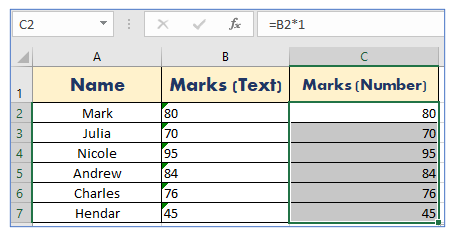
NOTE: Make sure to select the General format for the formula cells.
Option 5: Change text to number with Paste Special- Multiply
Step-1: Enter the number 1 in any cell.
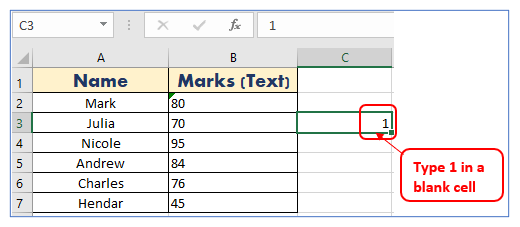
Step-2: Copy the value of that cell.
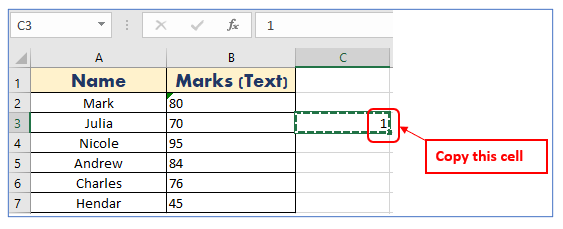
Step-3: To convert, select the cells with text values.
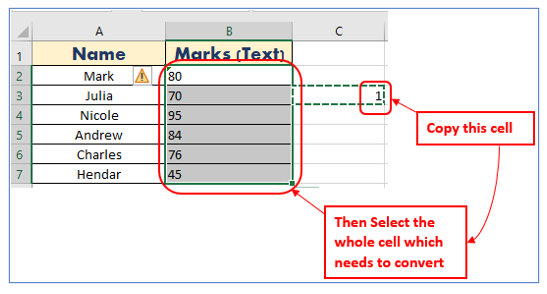
Step-4: Right-click, then click the arrow to the right of Paste Special and choose Paste Special.
ALTERNATIVE: Go to the Home tab, the click on Paste list arrow and select Paste Special.
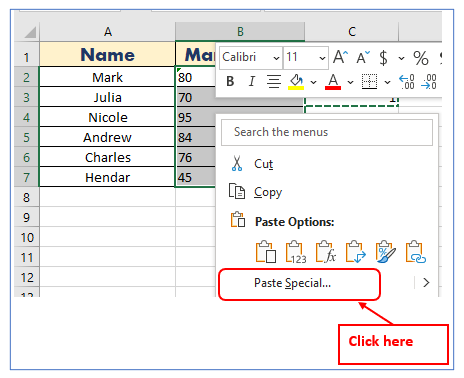
ALTERNATIVE:
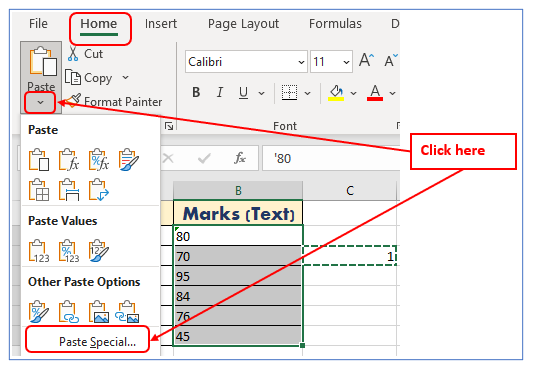
Step-5: Select Multiply from the Operation category in the Paste Special dialog box.
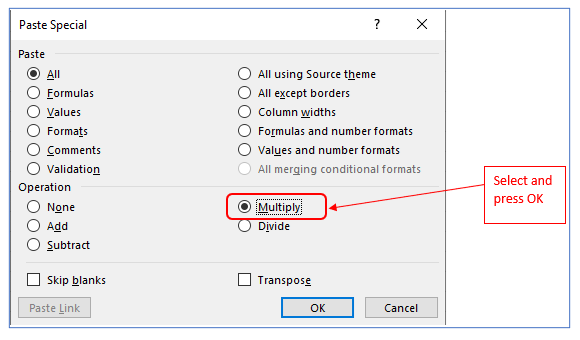
Result outlined in below:
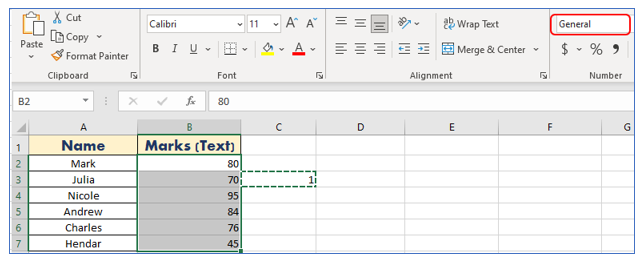
Option 6: Convert text to number with a Value formula
Step-1: Insert a new column to the right of the data that needs to convert.

Step-2: Type the VALUE function in the new cell.
Formula:
=Value(B2:B5)

Step-3: Press enter. Result outlined in below:

Application of Convert Text to Number in Excel
- Data Import Correction: Convert text-formatted numbers back to numerical format after importing data from different sources, ensuring accurate calculations and analyses.
- Error Correction: Rectify common errors such as leading apostrophes or spaces that cause numbers to be treated as text, preventing formula and function misinterpretations.
- Enhanced Data Analysis: Enable statistical analyses and mathematical operations by converting text to numbers, allowing for meaningful data evaluations and insights.
- Chart and Graph Preparation: Ensure accurate graph and chart representations by converting text-based data into numerical values, facilitating proper visualization and interpretation.
- Budgeting and Financial Analysis: Convert financial data formatted as text into numbers to perform budgeting, forecasting, and financial analysis accurately.
- Data Consolidation: Simplify the process of consolidating data from various sources by converting text to numbers, ensuring uniformity and compatibility in datasets.
You may be interested:
